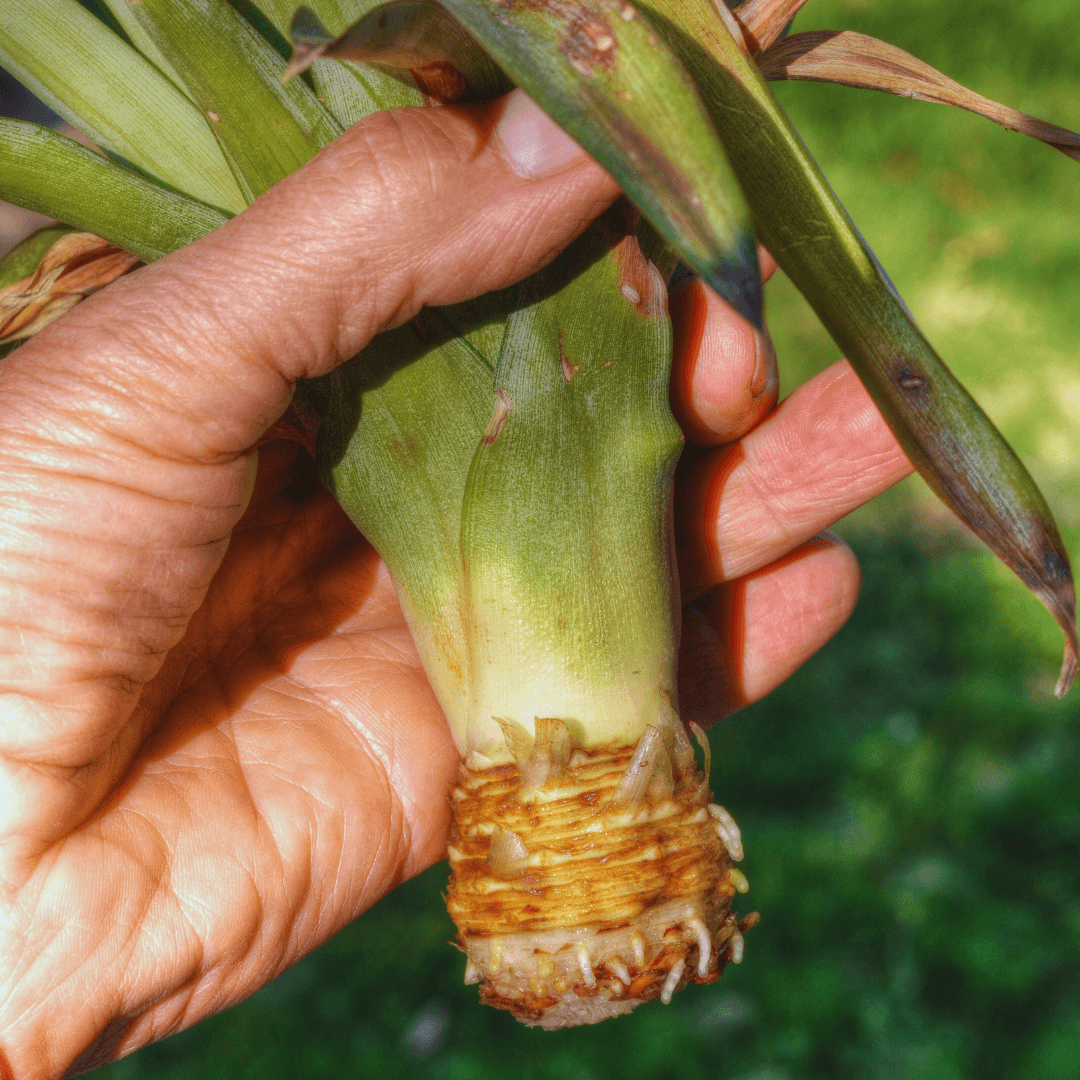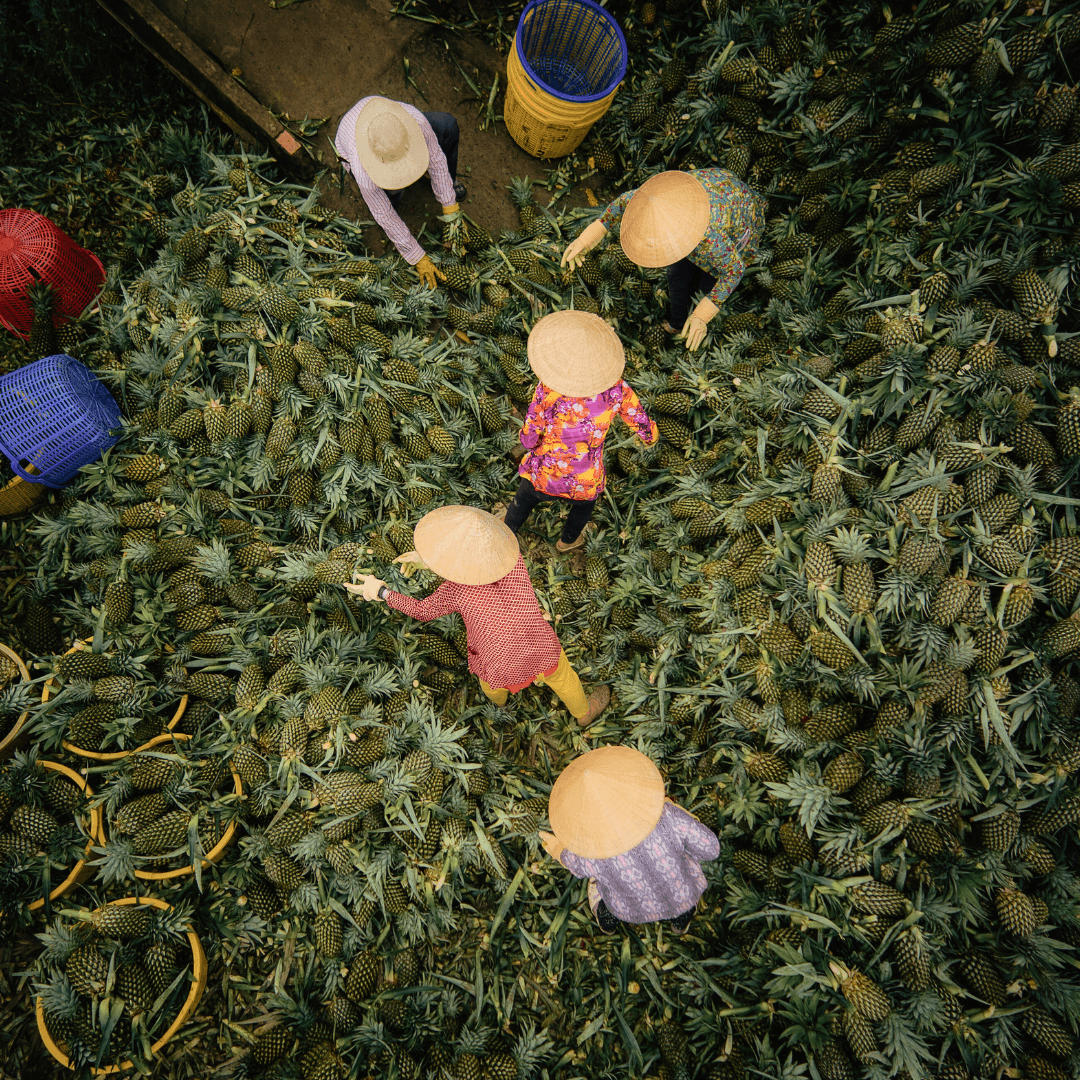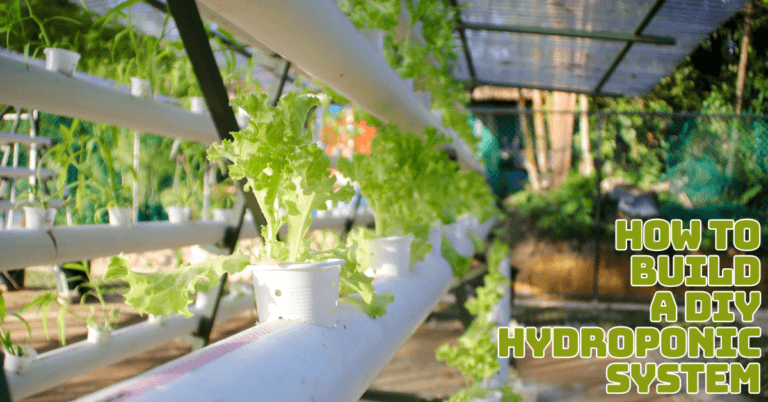How To Grow A Pineapple Plant
How To Grow A Pineapple Plant
A pineapple plant brings a touch of the tropics to any indoor or outdoor location, and it's also a fun and gratifying hobby to grow at home. Pineapples are surprisingly easy to cultivate with just a little patience.
Whether starting from a store-bought pineapple top or a young plant, understanding the right conditions and care will help you nurture a healthy, fruit-bearing plant.
This article will help you grow pineapples effectively. How to Grow a Pineapple Plant is your ultimate guide to cultivating this tropical delight!
Types Of Pineapple Plants
There are several types of pineapple plants, each with unique characteristics. Here are some popular varieties:
1. Smooth Cayenne Pineapple
One of the most common commercial varieties, Smooth Cayenne, has a high sugar content and juicy flesh. It has smooth, spineless leaves and is often used for canned pineapple.
2. Red Spanish Pineapple
Known for its bright red or orange skin, Red Spanish pineapples are more fibrous and have a tart flavour. They are more resistant to diseases and are often grown in the Caribbean.
3. Queen Pineapple
This variety is smaller and more compact, with a golden yellow flesh that is sweet and aromatic. Queen pineapples are popular in Australia and South Africa and are often eaten fresh.
4. Abacaxi Pineapple
Abacaxi pineapples are large and have white, tender, and sweet flesh. They are highly prized in Brazil and are known for their excellent flavour and juiciness.
5. Pernambuco Pineapple
Also known as “Eleuthera” or “Sugarloaf,” this variety has a cylindrical shape with a sweet, almost translucent flesh. It's grown mainly in the Bahamas and is known for its exceptionally sweet taste.
6. MD-2 Pineapple
MD-2 is widely cultivated as a newer hybrid variety for its consistent size, sweetness, and long shelf life. It has a golden colour and is often seen in supermarkets worldwide.
7. Red Pineapple
This ornamental variety has striking red skin and is often grown for its decorative appeal rather than for consumption. The fruit is smaller and less sweet than other varieties.
8. Variegated Pineapple
Grown as an ornamental plant, the variegated pineapple is well-known for its eye-catching striped leaves. It produces smaller fruits that are edible but less flavorful.
These different types of pineapple plants offer a range of flavours, sizes, and uses, from fresh eating to ornamental gardening.
How To Grow A Pineapple Plant
Enjoying fresh, homegrown fruit is a delightful process of cultivating a pineapple plant at home. With a healthy pineapple crown, patience, and the right care, you can grow a thriving plant indoors or outdoors, adding a tropical touch to your space.

1. Choose A Healthy Pineapple
Choosing a healthy pineapple is crucial for a successful growing experience. Begin by selecting a fresh pineapple that has vibrant green leaves.
The leaves should be firm and intact, without browning or wilting, as these can indicate poor health. Avoid pineapples with any signs of mould, rot, or excessive softness on the fruit, as these issues can negatively impact the growth and development of your plant.
A ripe pineapple often smells fragrant, but be cautious of overly ripe or soft fruits, as they may not root as effectively. Choosing a pineapple with healthy, green leaves and no visible damage will increase your chances of growing a robust plant that produces delicious fruit.
Proper selection sets the foundation for successful propagation, leading to a thriving pineapple plant in your garden or home.

2. Remove The Top Of The Pineapple
Remove the leafy top from the fruit to prepare your pineapple crown for planting. You can do this by twisting the crown with your hand until it separates from the pineapple or using a knife to cut it off, leaving about an inch of fruit flesh attached to the crown.
Next, strip away a few lower leaves, revealing about an inch of the stem. This exposed stem is where roots will develop, so it's important to clear this area.
Once you've prepared the crown, set it aside to dry for a day or two. This drying period allows the cut end to heal, forming a protective layer that helps prevent rotting when you plant it.
This vital step is essential for ensuring the long-term health of your pineapple plant. After drying, your pineapple crown will be ready for the next planting stage, either directly in soil or water, to encourage root growth.

3. Root The Pineapple Crown
To root your pineapple crown, place it in a container filled with water, ensuring that only the base of the crown is submerged.
To prevent rotting, keep the leaves above water. Place the container in a warm, bright location without direct sunlight. Change the water every few days to keep it fresh and oxygenated, which helps promote healthy root development.
A few weeks later, roots will appear at the crown's base. Once the roots are about 2-3 inches long, your pineapple crown can be transplanted into soil. This rooting stage is crucial for establishing a strong foundation for your pineapple plant's growth.
4. Plant The Pineapple Crown
Once your pineapple crown has developed roots about 2 inches long, it's time to plant it in soil. Pick a pot with adequate drainage holes and fill it with well-draining soil, such as a cactus or succulent mix. This soil will keep water from building up around the roots, which is good for your pineapple plant's well-being.
Gently place the crown in the pot, ensuring the soil fully covers the roots. Bury the crown deep enough to cover the roots, leaving the leafy part above the soil.
To assist the dirt settle around the roots after planting, give the area a good watering. A mistake that can cause root rot is overwatering.
It would be best to put the pot in a warm, bright spot where the plant can get lots of light. In the weeks following planting, keep the soil slightly moist but not soggy to encourage further root development and healthy growth.

5. Provide Sunlight For A Pineapple Plant
Giving pineapple plants a sunny setting is crucial since they need lots of sunlight to develop robust and healthy. Once your pineapple crown is planted, place the pot where it can receive at least six hours of direct sunlight daily.
A south-facing window or a bright spot on a patio or balcony is ideal for ensuring your plant gets the necessary light. Sunlight helps pineapple plants produce energy through photosynthesis, which is crucial for their growth and fruit production.
If you're growing your pineapple plant indoors with limited natural light, consider using a grow light to supplement the sunlight.
This will help maintain the plant's health, especially during winter when daylight is shorter. Remember, while pineapple plants love sunlight, they also appreciate warm temperatures.
Keep your plant in a spot where it can enjoy warmth throughout the day, ideally between 70°-85°F (21°-29°C). Your pineapple plant will flourish with the right amount of sunlight and warmth.
6. Water A Pineapple Plant Regularly
Proper watering is the secret to a pineapple plant's healthy growth. After planting, keeping the soil continuously damp but not drenched is critical.
Give the plant plenty of water, ensuring the water reaches the roots by penetrating the soil. However, adequate drainage in the pot should be provided to avoid standing water, which can cause root rot. The pineapple plant grows more drought-tolerant as it settles in and flourishes.
You can now reduce the frequency of watering. Let the top inch of soil dry out entirely between waterings to replicate the plant's natural environment.
Since pineapples are native to tropical climates, they have evolved to tolerate dry spells. In the warmer months, you should water your plant more frequently, particularly in direct sunlight.

7. Fertilize A Pineapple Plant Sparingly
It's crucial to fertilize your pineapple plant carefully to prevent overfertilization. Fertilization can also help boost the plant's growth.
As they don't require much fertilizer, pineapple plants can thrive with a balanced fertilizer sprayed every two to three months during the growing season.
A balanced fertilizer, such as one with equal amounts of nitrogen, phosphorus, and potassium (10-10-10 or 14-14-14 mix), makes healthy foliage, root development, and fruit production possible.
Apply the fertilizer circumferentially around the base of the plant, keeping it away from the leaves during the growing season, which normally lasts from spring to early fall.
This helps shield the leaves from fertilizer burn. Water the plant after fertilization to aid in the nutrients' penetration of the soil and uptake by the roots.
8. Pruning A Pineapple Plant
Pruning is an easy yet necessary way to keep your pineapple plant looking good and healthy. As the plant grows, it’s common for some leaves to become dead, damaged, or discoloured.
Removing these leaves helps prevent disease and pests from taking hold, as decaying plant material can attract unwanted insects and create an environment for fungi and bacteria to thrive. To prune your pineapple plant, inspect it regularly for any leaves that appear brown, wilted, or torn.
Trim these leaves as near the base as possible, careful not to damage the healthy parts of the plant, with a clean, sharp pair of scissors or pruning shears.
Removing dead or damaged leaves also helps the plant breathe better, which is important for avoiding mildew and mould. Pruning keeps your pineapple tidy and appealing while preserving the plant's health.
9. Ensure Proper Drainage For A Pineapple Plant
Proper drainage is essential for your pineapple plant's health. Because they are sensitive to wet soil, these tropical plants may experience root rot and other problems. Select a pot with bottom drainage holes for the best possible drainage.
These perforations keep the soil from being excessively saturated by allowing extra water to drain out. To further enhance drainage, add a layer of gravel or tiny rocks to the bottom of the container before adding soil.
This gravel layer creates a space for excess water to accumulate away from the roots, improving overall drainage and reducing the risk of waterlogging.
When planting, use a well-draining soil mix, such as one designed for cacti or succulents, which promotes quick drying and prevents moisture buildup.
Water the plant thoroughly, but let the soil dry out slightly between waterings. By providing good drainage and avoiding overly frequent watering, you create a healthier environment for your pineapple plant, supporting its growth and preventing common issues associated with excess moisture.

10. Repotting Of A Pineapple Plant
Repotting is crucial for your pineapple plant to remain healthy and thrive, especially as it ages and spreads. An obvious indication that a larger container is needed is if the roots are starting to show through the drainage holes at the bottom of the pot or if the plant seems congested and cramped.
For repotting, choose a pot one size larger than the current one. Gently remove the plant from its old pot, careful not to damage the roots.
Loosen any tightly bound roots and inspect them for signs of rot or disease, trimming off any problematic areas. Place the plant in the new pot with fresh, well-draining soil, ensuring that the root ball is level with the top of the soil.
After repotting, give the plant lots of water to allow the dirt surrounding the roots to settle.
11. Propagate New Pineapple Plants
Propagating new pineapple plants is a rewarding way to expand your garden once you’ve harvested the fruit. Pineapple plants produce slips, small offshoots that grow at the base of the mature plant.
These slips can be used to start new plants. To propagate using slips, carefully remove them from the base of the mature plant, making sure to include some roots.
Allow the slips to dry for a day or two to prevent rot before planting them in a pot with well-draining soil. To promote roots, give them water and place them in a warm, sunny area.
Alternatively, you can propagate from the crown of the harvested fruit. Follow the same process as with the initial planting: twist or cut off the crown, remove a few lower leaves, and let it dry for a day or two.
Then, place the crown in water until roots develop, or plant it directly into the soil. Both methods can lead to healthy new pineapple plants, allowing you to enjoy more of these tropical fruits and continue cultivating your garden.

12. Harvesting A Pineapple
Harvesting a pineapple at the right time ensures optimal flavour and sweetness. Your pineapple is ready for harvest when its skin turns a rich golden-yellow colour and emits a sweet, fragrant aroma.
These colour changes indicate that the fruit has ripened and developed its full sweetness. To harvest, gently grasp the pineapple and twist it steadily. The fruit should come off the plant with minimal resistance.
Be careful not to damage the plant or the surrounding foliage during this process. If the pineapple does not come off easily, it may need more time on the plant.
Once harvested, pineapples will not continue to ripen significantly, so it is important to pick them at the peak of their maturity.
After harvesting, you can enjoy your pineapple fresh or store it in a cool place for a few days until you’re ready to eat it. Proper harvesting ensures you get the best flavour and quality from your homegrown pineapple.
13. Flowering Pineapple Plant
A flowering pineapple is a striking and unique tropical plant from the bromeliad family. As it matures, the plant grows spiky, sword-like leaves arranged in a rosette, and the central flower emerges from the heart of the plant.
The flower of a pineapple is typically pink, purple, or red. It forms a compact, cylindrical cluster that develops into the pineapple fruit. The fruit's crown continues the plant's leaves, giving it its signature look.
Flowering typically occurs after the plant is about two years old. It is signalling that the pineapple is on its way to forming. Pineapple plants are often admired for their exotic appearance and low-maintenance care requirements.
FAQ
1. Can I Start A Pineapple Plant From A Pineapple I Bought At The Store?
Answer: Yes, you can grow a pineapple plant by planting the leafy crown of a store-bought pineapple.
2. Can I Grow A Pineapple Plant Indoors?
Answer: Yes, pineapple plants can be grown indoors. Just ensure they receive enough sunlight and are kept in a warm environment.
3. How Long Does It Take For A Pineapple Plant To Produce Fruit?
Answer: A pineapple plant typically produces its first fruit in 2-3 years. Once the plant matures, it can continue producing fruit for several years.
4. Can Pineapple Plants Survive Winter?
Answer: Pineapple plants are tropical and cannot tolerate frost. If you live in a colder climate, bring the plant indoors during winter or grow it in a container that can be moved.
Conclusion
In conclusion, growing a pineapple plant at home is enjoyable and rewarding, bringing a touch of the tropics to your space.
You can successfully nurture a healthy, fruit-bearing pineapple with the right care, patience, and attention to the conditions your plant needs.
Whether you’re a beginner or an experienced gardener, following these steps will lead to a thriving plant. For more gardening tips and advice, explore other posts on our blog. Happy gardening!
I trust you enjoyed this article on How To Grow A Pineapple Plant. Please stay tuned for more blog posts soon. Take care!
JeannetteZ
>>>Please click here to read my all-inclusive article, About The Essential Companion Planting Guide<<<
>>>Please click here to read my all-inclusive article about Container Gardening<<<
>>>Are you interested in homegrown herbs and medicine? Please click here to find out more about it!<<<
Your Opinion Is Important To Me
Do you have thoughts, ideas, or questions? I would love to hear from you. Please leave me your questions, experiences, and remarks about this article, How To Grow A Pineapple Plant, in the comments section below. You can also email me at Jeannette@Close-To-Nature.org.
Disclosure
This post may contain affiliate links. As an Amazon Associate and other affiliate programs, I earn from qualifying purchases at no extra cost to you. Please read my full affiliate disclosure.
You might also enjoy these blog posts:
Best Tips To Grow Hibiscus In A Pot
Simple Ways To Practice Mindfulness



